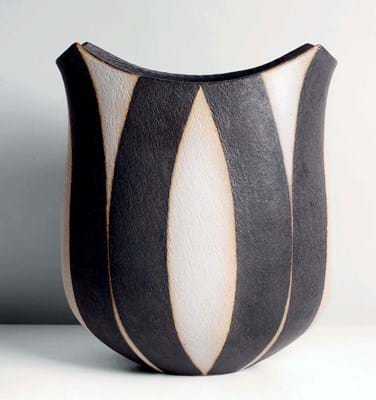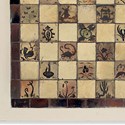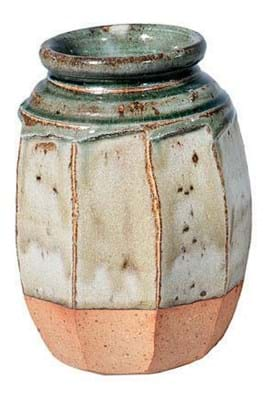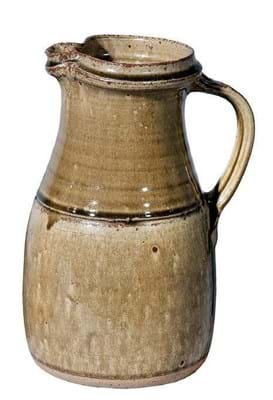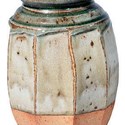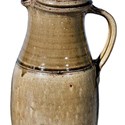For a long time studio ceramics have played second fiddle to other ‘art’ forms.
As Marijke Varrell-Jones of London specialist auction house Maak points out, the traditional artistic pyramid places painting and sculpture at the top and the applied arts somewhere towards the bottom.
“It seems wrong that the establishment decrees that there must be a hierarchy between the potter’s craft and contemporary art but there are commercial considerations,” she says.
A line has long been drawn between artist ceramics – works made by recognised fine artists from Paul Gauguin and Pablo Picasso to Lucio Fontana and Roy Lichtenstein who have occasionally chosen ceramics as a sculptural medium – and the craft work of British studio potters whose oeuvre is dedicated to modelling and throwing items in clay.
“Art or artist is largely self-determined – what the ceramicist chooses to call themselves and what galleries representing them choose to call their work,” explains Varrell-Jones. Grayson Perry, she says, has always considered himself as an artist. His 1996 amphora-shaped earthenware vessel entitled I want to be an artist, made a premium-inclusive £632,750 at Christie’s in October 1997.
Lucie Rie (1902-95) defined herself as a ceramicist, already trained at the potter’s wheel when she fled Vienna in 1938 and a life-long experimenter with glazes and shapes.
It is only recently that prices for her work have come to resemble those of other museum quality ‘Modern British’ works of art. Between 2014 and 2016 her works reached new heights, the record broken on a number of occasions before a 9in (22cm) footed porcelain bowl took $170,000 (then about £140,000) at Phillips New York.
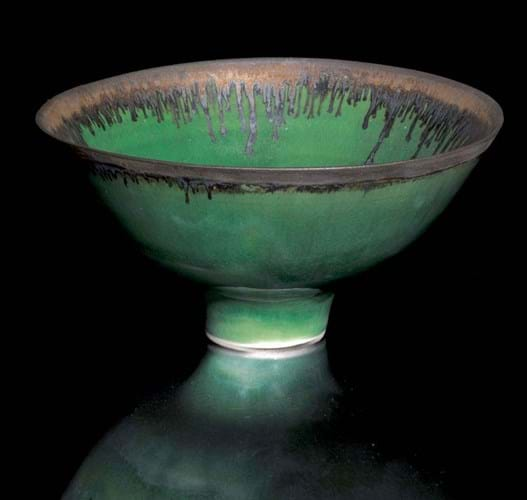
Lucie Rie’s 4in (10cm) high, c.1980 porcelain footed bowl with an emerald green glaze took £26,000 at Sotheby’s on September 18.
Some of London’s art galleries decided a while ago that British ceramics could be art. From 1988 until it closed in 2011, Galerie Besson, the Bond Street gallery run by Anita Besson (1933-2015), represented a Who’s Who of studio potters from Rie to Jennifer Lee. At Gimple Fils (for 45 years in Davies Street but now moving to pastures new) the talents of James Tower were nurtured and supported.
Changing auction landscape
Designated auctions – where the link between art and money can be most obvious – also encouraged the financial progress of a raft of names in the 80s and 90s. Prices for the best Hans Coper (1920-1981) vessels had topped £50,000 by the late 1990s – a level that stood for close to a generation.
However, when Bonhams held their last dedicated studio ceramics sale in 2008, bowing to the same commercial realities as had Christie’s and Sotheby’s a few years earlier, the baton was picked up by smaller firms. With studio ceramics typically subsumed into ‘design’ sales at the main London houses, auctioneers such as Adam Partridge, Woolley & Wallis, Mallams and Maak made the running instead.
Together they set the ball rolling for Jennifer Lee, John Ward (b. 1938) and John Maltby (b. 1936) and posted records for a host of lesser-known names. The Firth collection at Partridge in 2015 ranks high among the more memorable sales of recent years while more recently in March, one of Hans Coper’s cycladic-inspired ‘arrow head’ vases took £305,000 (plus 21% buyer’s premium) at Exeter auctioneers Bearnes Hampton & Littlewood (ATG No 2332) – a sum well in excess of those posted during previous historic spikes in the studio pottery market.
More on the role of UK regional sales in this market in the second part of this feature.
Market surge
It was doubtless results such as this that have encouraged London’s international auction rooms to change tack and look again at how this once more burgeoning niche is presented.
As the market surges back from the dip it suffered at the start of the century, this year all the four big houses are conducting sales of contemporary ceramics during and around Frieze week (4-7 October).
Phillips has a sale titled Shape & Space on October 5 while at King Street on October 2 is a £2.2m-3.2m evening sale titled (hopefully without tempting fate) Un/Breakable. Christie’s is sufficiently sure of this 37-lot blend of both artist ceramics and items from the British studio movement for the firm’s Post-War and Contemporary Art head Leonie Mir to have organised an American and Far Eastern tour of the highlights.
London’s rooms are looking again at how this once more burgeoning niche is presented
Sotheby’s (25% buyers’ premium) was first off the blocks on September 18 with the Made In Britain sale run since 2014 by Modern and Post War British art specialist Robin Cawdron-Stewart.
The stellar names of Lucie Rie and Hans Coper whose market now runs parallel to the demand for Modern British painting, were represented: Rie’s late 1970s 12in (32cm) tall stoneware vase with flaring lip selling at £26,000 (estimate £7000- 10,000) and her 4in (10cm) footed porcelain bowl with a green glaze taking the same sum.
Rising star
However, the take-home result was undoubtedly the new auction record for a 1988 work by rising star Jennifer Lee.
Compare this £26,000 result with the more modest £750 achieved for an early work by Michael Cardew (1901-1983) at Sotheby’s. Best known for the pots he created after years spent in West Africa between 1942 and 1966, this 7in (17.5cm) three-handled loving cup decorated with the Cornish crest dated from 1923-26 when he was Bernard Leach’s first apprentice.
The work of well-respected South German potter Gabriele Koch (b.1948) appears at London auctions regularly and remains affordable. At Sotheby’s, her 14in (35.5cm) tall vase went on its lower estimate of £600.
As a general rule pottery in the Anglo-Japanese Leach tradition remains more affordable than the sleeker lines adopted by the heirs of Rie and Coper. At Bonhams’ biannual Decorative Art and Design sale this month is a late 1970s or early 1980s stoneware charger by David Leach (1911-2005) estimated at £500-700 and a 19in (48cm) wide smoke-fired earthenware bowl at £400-500.
Mark Oliver, Bonhams’ head of department, says: “We are finding that contemporary ceramics are increasingly popular. This area of the market has grown in recent years, among both established collectors and younger enthusiasts.”
As a general rule pottery in the Anglo-Japanese Leach tradition remains more affordable
Titans of the British studio pottery movement
The Leach tradition of handmade utility wares was being challenged as early as 1929 when William Staite-Murray (1881-1962) set up his studio in Brockley, Kent. He was determined to reject any functionality and promote pottery as an equal to the art produced by his friends Ben and Winifred Nicholson with whom he held joint exhibitions.
In the 1930s, Staite-Murray outranked Leach in fame and popularity. Today he is admired but generally affordable. Salisbury auctioneers Woolley & Wallis sold a dozen of his stoneware bowls and vases last December at prices ranging from £150 to £2000. However, this c.1955 exhibition vase standing 2ft 9in (83cm) tall, impressed with Staite-Murray’s seal took £20,000 hammer at Bonhams’ Knightsbridge sale on June 20.
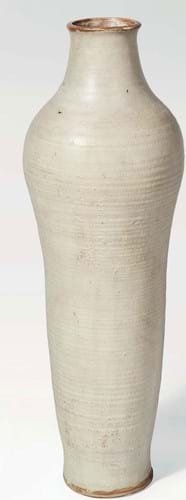
A c.1955 exhibition vase by William Staite-Murray that took £20,000 hammer at Bonhams’ Knightsbridge.
While Staite-Murray was at the peak of his popularity in the 1930s, important events were happening elsewhere. Hans Coper (1920-1981) was training as an engineer in Germany when, in 1939 at the age of 19, he fled the Nazis for refuge in England.
Working alongside Lucie Rie as an unskilled assistant at her London studio, he began to merge pottery and sculpture – sticking to the wheel to produce his scantily decorated white, buff, brown and black stoneware forms.

Hans Coper’s stoneware ‘Cycladic Arrow Form’ c.1970 stands 11½in (29.5cm) tall. It is estimated at £80,000-120,000 at Phillips’ Shape & Space sale in London on October 5.
The second part of this feature, focused on galleries and regional auctioneers, will appear in next week’s issue.



